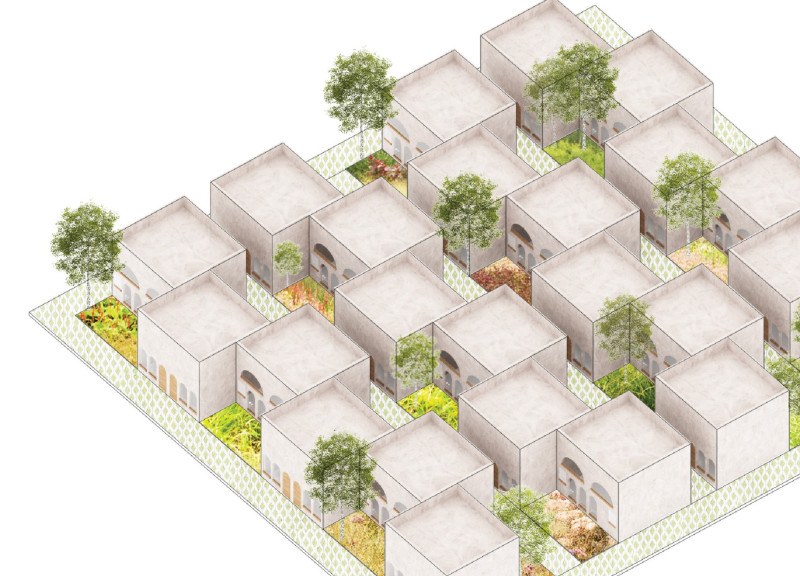5 key facts about this project
The architectural design project presented is a forward-thinking response to the growing challenges of affordable housing. It focuses on communal living while reimagining traditional apartment configurations, particularly suitable for urban and suburban contexts. This project addresses the need for better living conditions by emphasizing community interaction within residential environments.
The design comprises compact individual units combined with shared amenities. Each unit features an efficient layout that typically includes essential living and sleeping spaces, while communal areas are integrated to foster social engagement. The project aims to enhance the quality of life through thoughtful spatial arrangements that promote collaboration among residents.
Design Integration and Community Focus
This project stands out by prioritizing communal living over isolated individual units. Unlike conventional residential designs that often segregate private spaces, this approach encourages shared facilities such as kitchens, bathrooms, and recreational areas. Such communal spaces are designed to facilitate social gatherings and create a sense of belonging among residents.
Notable features include centralized cooking and dining areas equipped with adaptable seating and cooking surfaces to promote interaction during meal preparation. Workspaces within the private units are configured to allow for flexibility in use, accommodating those who work from home. This integration supports varied lifestyles and fulfills diverse needs in a modern living environment.
Innovative Use of Space and Materials
The project employs an innovative layout that maximizes the functionality of compact spaces. The floor plans articulate a clear division between private and communal areas, ensuring that both aspects are accessible yet distinct. The utilization of modular design principles allows for scalability and adaptability in future developments.
Materials play a pivotal role in this design philosophy. Concrete offers durability and structural integrity, while extensive glazing creates openness and promotes natural light within residences. The inclusion of wood and enamel finishes adds warmth and user-friendly surfaces, contributing to both aesthetics and usability.
Residents are encouraged to engage with each other through the design's strategic placement of shared amenities, which serves to reinforce community ties. The overall arrangement provides opportunities for spontaneous interactions, challenging the notion that contemporary housing needs to prioritize privacy over community connection.
For a comprehensive understanding of the architectural plans and sections of this project, it is recommended to explore the detailed design elements presented. This will provide deeper insights into the architectural strategies employed and highlight the approach taken in addressing contemporary housing challenges.























































